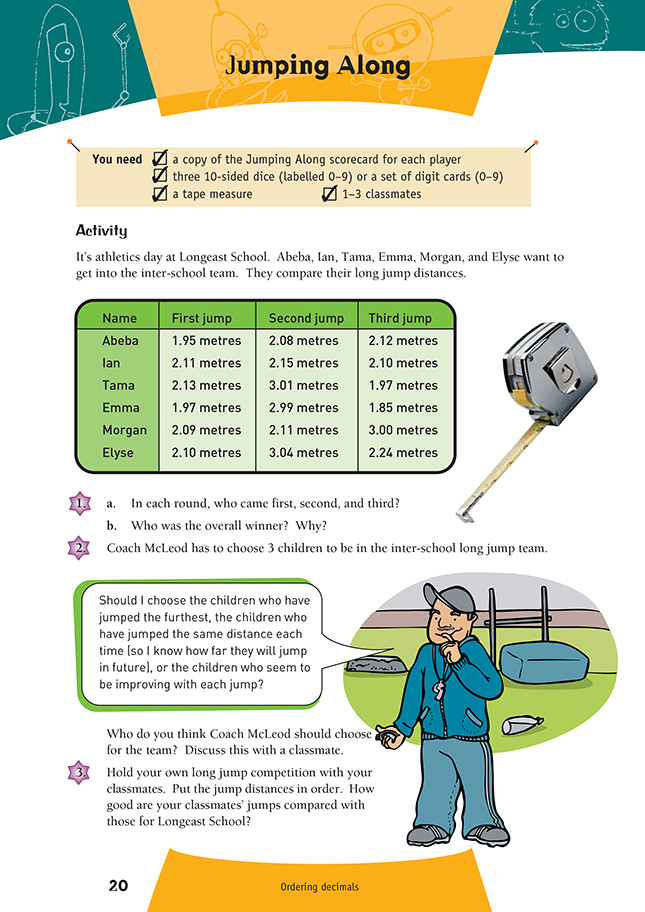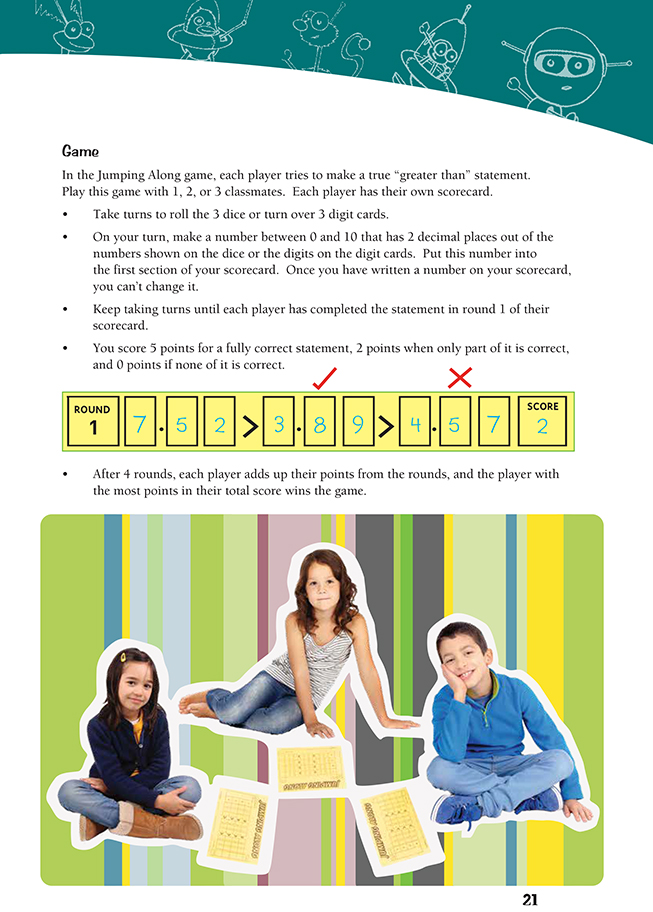This is a level 4 number activity from the Figure It Out series. It relates to Stage 7 of the Number Framework.
A PDF of the student activity is available.
Click on the image to enlarge it. Click again to close. Download PDF (296 KB)
order decimals to two decimal places
round decimals to nearest whole
- Three 10-sided dice (labelled 0-9) or a set of Numeral cards
- Copy of the Jumping Along scorecard for each player (see Copymaster)
- FIO, Level 3, Number, Book 2, Jumping Along, pages 20-21
- A tape measure
- 1-3 classmates
This activity develops understanding of decimal numbers through ordering and comparing them in a practical measurement context.
The key question to ask the students is: “How do we decide which of the decimal numbers is the largest?”
Note that students who read decimals like 1.97 as “one point ninety-seven” often develop misunderstandings about the place value of digits in decimal numbers. Ensure that the students read 1.97 as “one point nine seven”. They should also be able to read decimal numbers as equivalent fractions, for example, “one and ninety-seven hundredths”.
The students need to appreciate that the digit to the left of another is always greater in total value because of its place. This is true of decimal numbers as well as of whole numbers. Therefore, when the students order the jump distances, they should first look to the digit on the left that has the highest place value. If some digits are in the same column, as they are in this activity, the students then look at the face value of the digits to determine which is the largest. If some are still the same, the students should look at the next-to-left column and sort these digits. They continue this process until they have determined the largest number.
A useful summary sentence for this process is “Look left, then right to order the decimal numbers.”
The students could use the Numeracy Project Material Master 4-15 to help them order the decimals (see Related Resources).
Game
Have the students discuss some winning strategies for placing digits in the boxes. For example, “I always put the first number I get that is greater than 6 in the ones place” or “When I’m using dice, I try to wait for an 8 or a 9 before filling in the ones place.”
As a variation, instead of filling the numbers in sequence with each set of 3 digits, the students could put the first 3 digits in any of the 9 spaces and so on until all the spaces are filled.
Answers to Activity
1. a. Round 1: 1st Tama, 2nd Ian, 3rd Elyse Round 2: 1st Elyse, 2nd Tama, 3rd Emma Round 3: 1st Morgan, 2nd Elyse, 3rd Abeba
b. Elyse. She had the best jump overall. (If it were based on points for placings, she would still be the overall winner. She had a 1st, a 2nd, and a 3rd placing. Tama, the next best jumper, had a 1st and a 2nd placing.)
2. Answers will vary.
3. Practical activity
Game
A game for ordering decimals

